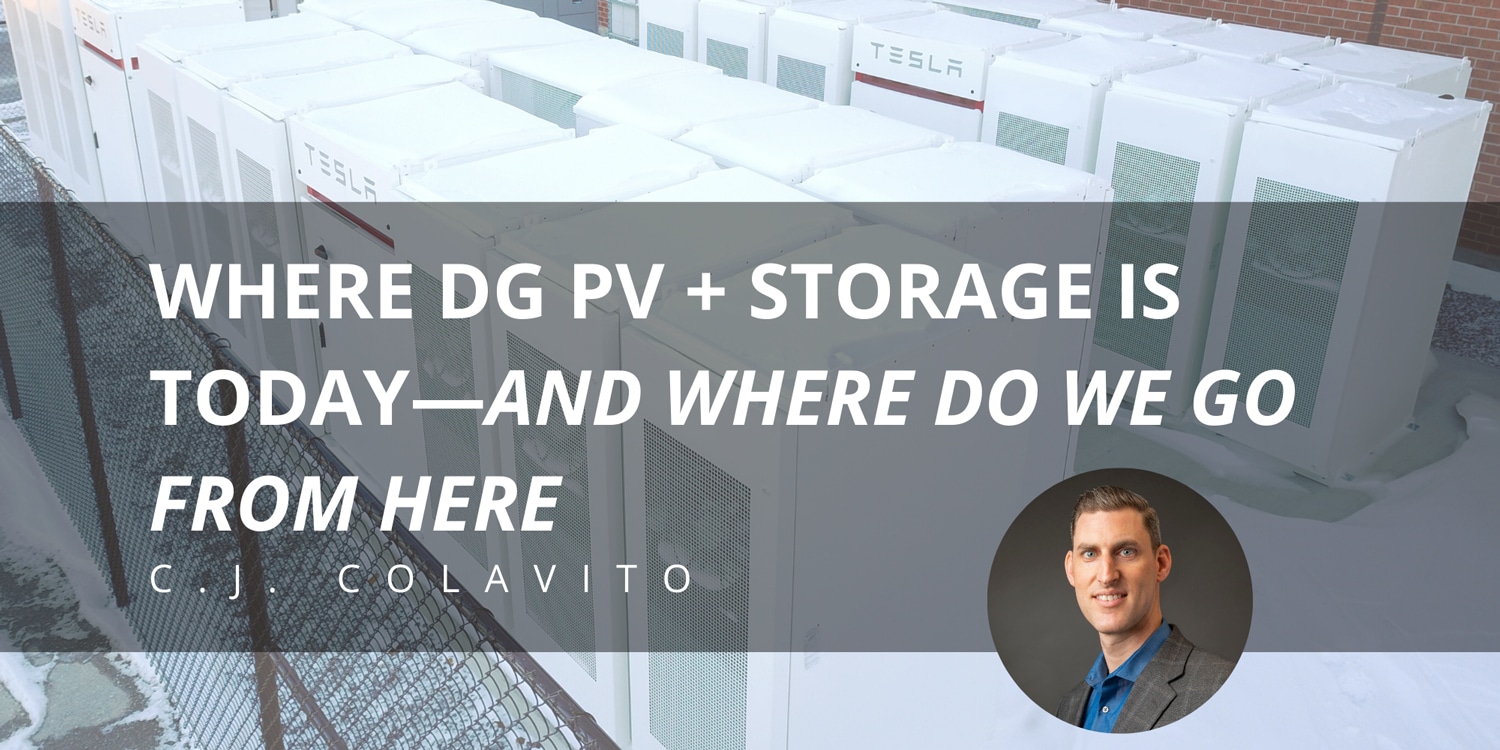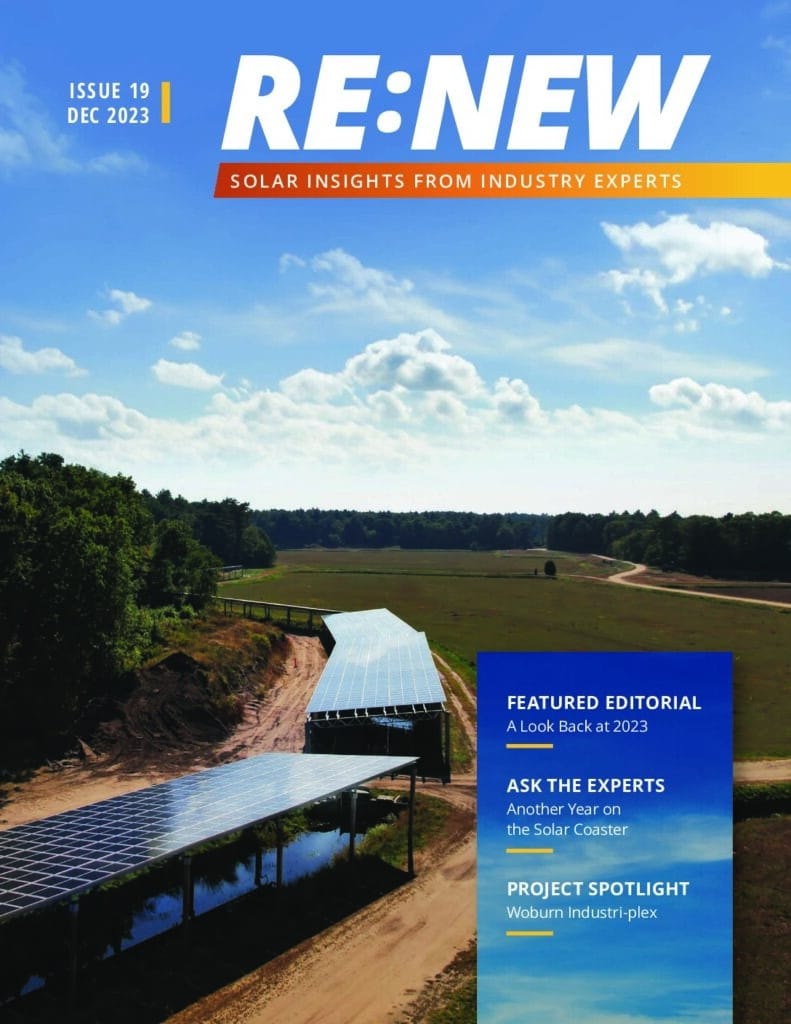You can barely discuss the solar industry these days without also discussing storage. Some have called storage the next frontier of the solar industry, and the question of storage solutions comes up frequently when talking to current and potential clients and partners.
The answer to that question, however, is not a simple one. When it comes to distributed generation solar (DG PV) + storage, it’s important to consider how the storage system is going to be used, how developers will get compensated for adding storage and what the future of DG PV + storage will look like.
How Will The System Be Used
Driven by policy frameworks in New York and Massachusetts, DG PV + storage projects are going to become ever more common as the Solar Revolution spreads.
Both states are pushing hard to increase the amount of energy storage within their boundaries, and it’s only a matter of time before it spills out to the rest of New England and, from there, to the rest of the country.
There are many ways an energy storage system is used. Two of the more common ways for behind the meter storage are for resilient (backup) power and demand-charge reduction.
Behind the meter DG PV + storage can also be used for energy arbitrage, meaning shifting energy purchases from high-cost times to lower-cost times. This is also known as load shifting and is a particularly common use, especially in California.
Another newer innovative use for storage is to maximize the generation through a limited AC interconnection point. Particularly in NY and MA it is becoming common to oversize a PV array far above the AC inversion capacity, beyond what would be traditionally acceptable. DC coupled energy storage is being integrated into the design to absorb clipping losses and release the excess generation into the late afternoon and evening. This is also another way to combat the infamous “duck” curve as solar PV deployment increases.
Source:https://www.caiso.com/Documents/FlexibleResourcesHelpRenewables_FastFacts.pdf
Storage is also used to ease the integration of DG PV into the grid with fewer upgrade costs by smoothing power output ramp rates during unstable (partly cloudy) sky conditions, but this is much less common.
This is not an exhaustive list of storage uses, but other uses are far less common because of cost concerns and lack of proper compensation methods.
How Are Storage Systems Compensated
As incentive programs become more sophisticated, storage systems are being compensated on two criteria: energy and power.
Storage systems that are compensated on energy are the more traditional. Incentives are paid on the number of kilowatt-hours of energy they produce and hold. It’s the kind of system that most companies use when they are signing power-purchase agreements (PPAs).
Capacity payments, on the other hand, are incentives that are paid on the amount of power demand they take off the grid. In other words, the payments are made when the power is held in the battery and then discharged at times of high electricity demand, reducing congestion on the grid. These systems are typically used in virtually net-metered projects, community solar projects and systems with dedicated services that feed directly back into the grid.
Many incentive programs endeavor to reward both criteria. Make sure the solution you choose maximizes your compensation and has the ability to be adjusted in the future as the market changes.
What Does The Future Of DG PV + Storage Hold
If we want to get to a high-level of renewable energy penetration on the grid, DG PV + storage is essential. After all, the production of renewable energy depends on the availability of fuel, such as the sun shining or the wind blowing.
As a result, you either have to make the demand perfectly match the weather (a highly unlikely scenario) or you have to use energy-storage and smart-grid controls to better align supply with demand. Without storage, that balance—especially at night—would be nearly impossible.
The system of DG PV + storage isn’t perfect. There are still bugs to be worked out as it relates to behind the meter DG PV + storage compensation for the services they provide to the grid. But the technology is there, and it’s inevitable that DG PV + storage is essential for the next generation of the grid.
More Recent Blog Posts
A Mixed Legislative and Regulatory Landscape: Standard Solar’s July Policy Brief
July 15, 2024
Trevor Laughlin · 4 min read
Community Solar, Front And Center: Standard Solar's June Policy Brief
June 18, 2024
Trevor Laughlin · 3 min read
Powering Ahead: Standard Solar's May Policy Brief
May 14, 2024
Trevor Laughlin · 7 min read
Powering Ahead: Standard Solar's Monthly Policy Brief
March 6, 2024
Trevor Laughlin · 4 min read
Most Popular Blog Posts
New California Legislation Takes Community Solar Access to New Heights
Harry Benson · 3 min read
How To Create A Complete Commercial PV Design Package
CJ Colavito · 3 min read
A Mixed Legislative and Regulatory Landscape: Standard Solar’s July Policy Brief
Trevor Laughlin · 3 min read
Why Is Financing Commercial Solar So Difficult?
Scott Wiater · 3 min read








Share